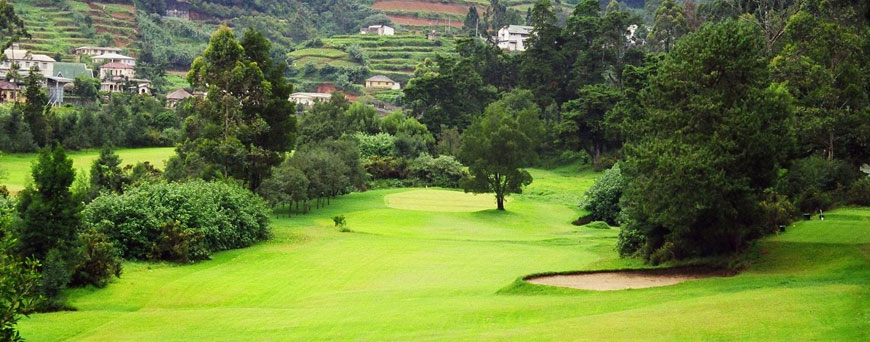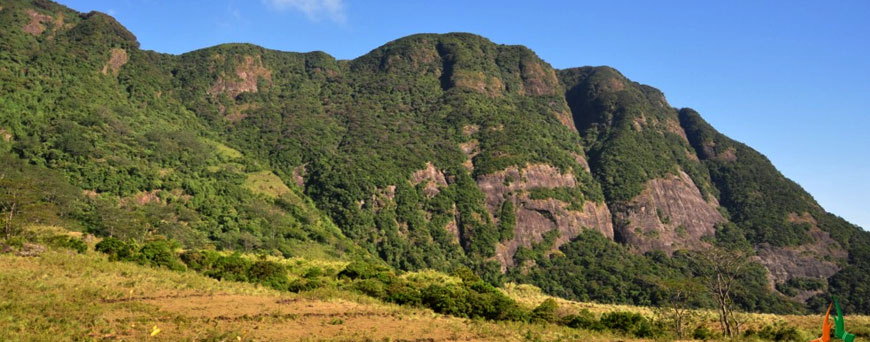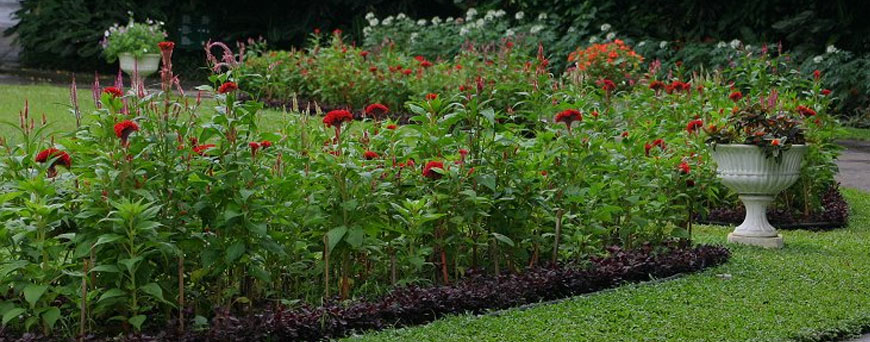

Nuwara Eliya
This is the premier hill resort of Sri Lanka which produces the world's best tea leaves as well as providing a view of Sri Lanka's highest mountain, Pidurutalagala which is 8282 feet. It is also famous for its 18 hole Golf Course, which is one of the finest in Asia.
Blessed with a salubrious climate, breathtaking views of valleys, meadows, mountains and greenery; it's hard to imagine that Nuwara Eliya is only 180 Km from hot and humid Colombo. Nuwara Eliya (City of Lights), also known as Little England, was the favourite hill station of the British who tried to create Nuwara Eliya into a typical English Village.
The old brick Post Office, country house like the Hill Club with its hunting pictures, mounted hunting trophies and fish, and its strict formal dinner attire; the 18 hole golf course, race course etc., all remind you of England.

Knuckles
The Knuckles Mountain Range lies in central Sri Lanka, in the Districts of Matale and Kandy.
The range takes its name from a series of recumbent folds and peaks in the west of the massif which resemble the knuckles of clenched fist when viewed from certain locations in the Kandy District.
Whilst this name was assigned by early British surveyors, the Sinhalese residents have traditionally referred to the area as Dumbara Kanduvetiya meaning mist-laden mountain range (Cooray, 1984).
The entire area is characterised by its striking landscapes often robed in thick layers of cloud but in addition to its aesthetic value the range is of great scientific interest.
It is a climatic microcosm of the rest of Sri Lanka. The conditions of all the climatic zones in the country are exhibited in the massif. At higher elevations there is a series of isolated cloud forests, harbouring a variety of flora and fauna, some of which cannot be found anywhere else in the world.
Although the range constitutes approximately 0.03% of the islandís total area it is home to a significantly higher proportion of the countryís biodiversity.

Sinharaja
Sinharaja Forest Reserve is a national park and a biodiversity hotspot in Sri Lanka. It is of international significance and has been designated a Biosphere Reserve and World Heritage Site by UNESCO.
The hilly virgin rainforest, part of the Sri Lanka lowland rain forests ecoregion, was saved from the worst of commercial logging by its inaccessibility, and was designated a World Biosphere Reserve in 1978 and a World Heritage Site in 1988.
The reserve's name translates as Kingdom of the Lion. The reserve is only 21 km (13 mi) from east to west, and a maximum of 7 km (4.3 mi) from north to south, but it is a treasure trove of endemic species, including trees, insects, amphibians, reptiles, birds and mammals.
Because of the dense vegetation, wildlife is not as easily seen as at dry-zone national parks such as Yala.
There are about 3 elephants and the 15 or so leopards are rarely seen. The commonest larger mammal is the endemic Purple-faced Langur.
An interesting phenomenon is that birds tend to move in mixed feeding flocks, invariably led by the fearless Greater Racket-tailed Drongo and the noisy Orange-billed Babbler. Of Sri Lanka's 26 endemic birds, the 20 rainforest species all occur here, including the elusive Red-faced Malkoha, Green-billed Coucal and Sri Lanka Blue Magpie.
Reptiles include the endemic Green pit viper and Hump-nosed vipers, and there are a large variety of amphibians, especially tree frogs.
Invertebrates include the endemic Common Birdwing butterfly and the inevitable leeches. Peaks Pinipitigala Mulawella Access ways Kudawa entrance - Colombo --> Kalawana --> Kudawa Pitadeniya Entrance - Galle or Matara --> Deniyaya --> Pitadeniya Morning Side Entrance -- Galle or Matara --> Deniyaya --> Morning Side Estate

Peradeniya
Royal Botanical Garden, Peradeniya is situated about 5.5 km to the west from the city of Kandy in the Central Province of Sri Lanka and attracts 2 million visitors annually. It is renowned for its collection of a variety of orchids. It includes more than 4000 species of plants, including of orchids, spices, medicinal plants and palm trees.
Attached to it is the National Herbarium of Sri Lanka. The total area of the botanical garden is 147 acres (0.59 km2), at 460 meters above sea level, and with a 200-day annual rainfall. It is managed by the Division of National Botanic Gardens of the Department of Agriculture. was the Assistant Director of the Peradeniya Botanical Gardens, in Sri Lanka, around 1910.
The origins of the Botanic Gardens date as far back as 1371 when King Wickramabahu III ascended the throne and kept court at Peradeniya near Mahaweli river. This was followed by King Kirti Sri and King Rajadhi Rajasinghe.
A temple was built on this location by King Wimala Dharma, but it was destroyed by the British when they were given control over the Kingdom of Kandy. Thereafter, the groundwork for a botanical garden was formed by Alexandar Moon in 1821.






